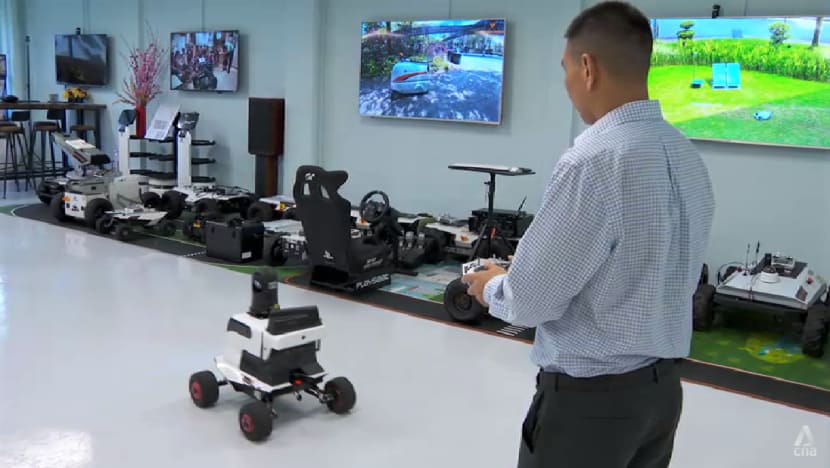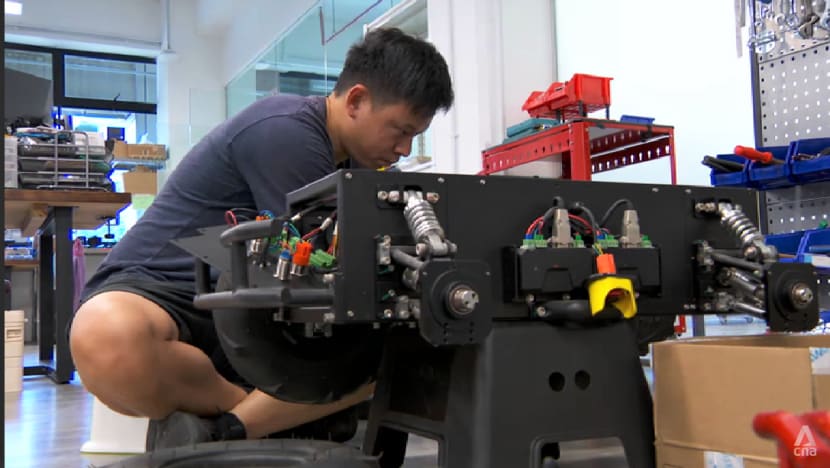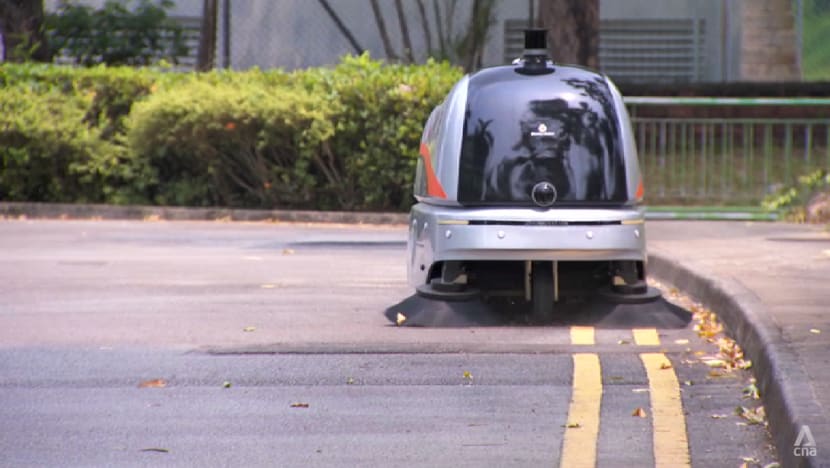Singapore turns to robots to attract talent, help firms tide through manpower crunch
However, robot manufacturers believe there is a long way to go before these robots can be readily adopted in daily life.

Singapore is turning to robots to open new doors for young talent and help labour-intensive companies cope with the manpower crunch.
SINGAPORE: Singapore is turning to robots to open new doors for young talent and help labour-intensive companies cope with the manpower crunch.
Professor Quek Tong Boon, chief executive of the National Robotics Programme of Singapore, said it is looking at robots that can assist people in demanding or dangerous roles.
These include healthcare robots that can help lighten the workload of nurses or construction machines that can inspect buildings after they have been completed, he told CNA’s Singapore Tonight on Thursday (Oct 5).
Already, industries grappling with a manpower crunch are relying on robots and smart technologies.
ADDRESSING LABOUR CONSTRAINTS
At some restaurants, robot servers assist in carrying heavy dishes.
“This job is very hard… and they need to lift a lot of heavy things. But (robot servers) can help them to walk less and lift less,” said Mr Jaden Kim, managing director of Bear Robotics, which develops robots catering to the hospitality sector.
“We want to help servers work efficiently. They can pay more attention to their customers, so maybe they can get more orders.”
Weston Robot, which builds a range of robots including a robotic dog that can carry out patrols and monitor for intruders, hopes that working with such machines will attract more young people to join sectors such as facilities management.

“The reason we are providing more robots in this area is because it is a labour-intensive area, and it is very difficult to attract Singaporeans, especially young people to enter this segment,” said Dr Zhang Yanliang, chief scientist and co-founder of Weston Robot.
The job scope will change, with robots doing the job while young talent try to manage or service them, he said.
CHALLENGES FACING ROBOT MANUFACTURERS
Despite the demand for smart technologies, robot manufacturers face various concerns.
Dr Zhang said one of the challenges his company has is talent acquisition.
“We are surrounded by many big companies and they provide very good packages to the fresh engineers. So as a small company here, it is very difficult to attract talent,” he added.

Even if the technology exists, there might not be a system present to support its use, said observers.
For instance, delivery robots are not yet able to enter the lifts of buildings to send food to different floors.
Yet companies said they hope that the public sector can take the lead in adopting automation, to narrow the gap between man and machine.
“The robotics journey is a very exciting adventure,” Mr Dylan Ng, chief executive of smart robotics firm LionsBot International, told CNA’s Singapore Tonight.
“There's no clear path ahead, but it is very exciting because it is fast-growing. So every innovation is new.”
WOMEN IN ROBOTICS
While the robotics scene may have the image of being male-dominated, a growing number of women are finding their footing in the sector.
Young women, for instance, make up more than 35 per cent of participants at the ongoing FIRST Global Challenge, an international robotics competition held in Singapore from Oct 7 to 10.
Ms Jane Wang, co-founder and chief executive of Roceso Technologies, which specialises in the design and manufacturing of rehabilitation robotics and platform technologies, said she has always been interested in science and technology.
The trained engineer later ventured into developing robotic solutions for healthcare needs.
"I realised there is really strong potential in healthcare, in designing exoskeleton devices for extremities, to help people with disabilities," she said.
MORE YOUTHS, CHILDREN PURSUE ROBOTICS
Meanwhile, more children and youths are pursuing robotics in their own free time.
At enrichment centre School of Robotics, for instance, building robots using Lego pieces has become a weekly affair for some children.
“I started robotics when I was about five years old,” said student Cayleigh Zhuo, who aspires to teach robotics in future.
“It inspired me to learn more new things and let my creativity come true through this experience.”

Another student David Foong said: “I just like the idea of putting things together and seeing it move.”
The School of Robotics said it is seeing more students taking classes, where they can build both technical and soft skills.
Its co-founder and chief executive Stephen Zhuo said some children are more hands-on.
“When they build something, they will have this tendency to carry on to do more difficult stuff as well,” he added.
“So this is like a progressive kind of stage, where they build their soft skills along the way through the fun of education.”
NURTURING THE NEXT GENERATION
Having fun has paid off in nurturing the next generation of robotics enthusiasts.
Institutions such as Ngee Ann Polytechnic (NP) have invested in research laboratories to get more youths to be interested in robotics.
“I've always enjoyed trying to experiment with different things and putting things together to see how they work,” said Kitti-Ampon Chia De En, a first year student at NP’s School of Engineering.
“Eventually this led me to developing an interest in trying to understand more about how different objects work and the engineering behind them.”
Together with two other NP students, they entered the National Robotics Competition and were eventually crowned champions after building a robot capable of moving wind turbines.
Working under time pressure has helped them learn to be adaptable when things go wrong.
First-year student Wong Le Yang from NP’s School of Engineering said: “What I learned from this is that you actually need to set some goals and standards so that you don't exceed your own limit, and also to never give up.”
The team, which is now preparing for international competitions, is looking to pick up new skills in artificial intelligence and programming to help them get better at their craft.

















